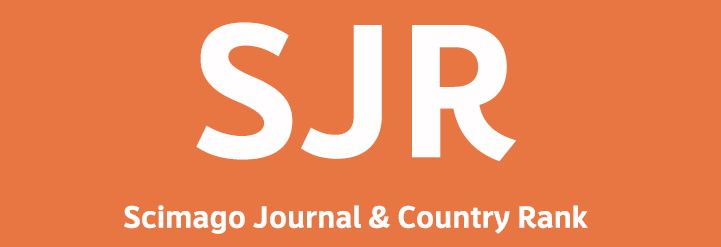Case Study of Heterogeneity Index’s Effect on The Successful Workover Based on The Apriori Algorithm
DOI:
https://doi.org/10.29017/scog.v48i1.1658Keywords:
heterogeneity index, mature field, production optimization, Apriori algorithm, association rule miningAbstract
The Indonesian government has set a target to reduce the consumption-production gap by increasing national oil production to 1 million barrels of oil per day (BOPD) and 12 billion standard cubic feet per day (BSCFD) of gas by 2030. Amongst several approaches, the optimization of mature fields offers a significant opportunity for quick production gains. However, analyzing these fields presents challenges due to the complexity, incompleteness, and poor quality of historical data. Heterogeneity Index (HI) is one of the methods that quickly measure well performance. This method is as simple as measuring a certain well as compared to the average performance at certain time. The parameter being used might vary, but production data is the most frequent one given its availability. Despite simple and practical, skepticism on the reliability of this method is still questionable. This work revisited "XYZ" field consisting of XX wells producing more than 32 years with hundreds of workovers. We brought evidences and insights on how HI leads to the workover success from. Apriori algorithm, an Association Rule Mining (ARM) technique, is employed to uncover rules from the noisy data. The results show that workover on wells with low HI mostly leads to success. Another insight is that of scale treatment is the most influential one in determining the success. Given these findings, the flow efficiency is the issue that should be well treated and HI is representative enough to measure this one.
References
Abdel-Basset, Mohamed, Al-Mufarej, Mishal, Al-Mutawa, Majdi, Chetri, Hom, Anthony, Elred, Al-Zaabi, Hamad, Bolanos, Nelson, Ruiz, Hector, and Khalid Harami. (2018). Integrated Production Optimization Workflow Provides Robust Platform for Significant Oil Gain to a Mature Oilfield. Society of Petroleum Engineers. SPE-1931210-MS.
Agrawal, R., & Srikant, R. (1994). Fast algorithms for mining association rules. Proceedings of the 20th International Conference on Very Large Data Bases (VLDB), 487–499. https://doi.org/10.1016/B978-1-55860-153-0.50074-9
Borgelt, C. (2005). An implementation of the FP-growth algorithm. Proceedings of the 1st International Workshop on Open-Source Data Mining: Frequent Pattern Mining Implementations, 1–5. https://doi.org/10.1145/1133905.1133906
Ego Syahrial & Hadi Purnomo (2009), "Peningkatan Produksi Minyak dengan Injeksi CO2 pada Lapangan Minyak Tua Sangatta Kalimantan Timur." Lembaran Publikasi Minyak dan Gas Bumi Vol. 43. NO. 2, 166 – 175.
EIA. (2023). Global Oil Market Trends. U.S. Energy Information Administration.
ESDM. (2022). Energy Policy Framework 2022. Ministry of Energy and Mineral Resources of Indonesia.
ESDM. (2023). Annual Energy Report of Indonesia. Ministry of Energy and Mineral Resources of Indonesia.
Galicia, J. (2021). "Data Analytics in the Optimization of Mature Fields." Energy Analytics Journal.
Han, J., Pei, J., & Yin, Y. (2000). Mining frequent patterns without candidate generation. Proceeding of the 2000 ACM SIGMOD International Conference on Management of Data, 1–12. https://doi.org/10.1145/342009.335372
Hipp, J., Güntzer, U., & Nakhaeizadeh, G. (2000). Algorithms for association rule mining—A general survey and comparison. ACM SIGKDD Explorations Newsletter, 2(1), 58–64. https://doi.org/10.1145/360402.360421
Harami, K., et al. (2013). Heterogeneity Index and Fast Screening Processes Used in a Large Mature Field Designed for Quick Production Gains. SPE 167350.
IEA. (2022). World Energy Outlook 2022. International Energy Agency.
IPCC. (2021). Impact of Energy Transitions on Oil and Gas Reserves. Intergovernmental Panel on Climate Change.
Mardiana, D. A., Rakhmanto, P. A., Riswati, S. S., Sofilda, E., Aribawa, S., & Martines, G. (2024). Petroleum Fiscal Regimes Attractiveness in Indonesia, Malaysia and Thailand: Application on Offshore Project Development. Scientific Contributions Oil & Gas Vol 47 No. 3, 256-276. https://doi.org/10.29017/SCOG.47.1.1613
Maurenza, Farrah, Yasutra, Amega, Tungkup, Iswara Lumban (2023). Production Forecasting Using Arps Decline Curve Model with The Effect of Artificial Lift Installation. Scientific Contributions Oil & Gas Vol 46 No. 1, 9-18. https://doi.org/10.29017/SCOG.46.1.1310
Parshall, J. (2012). "Revitalizing Mature Oil Fields: A Global Perspective." Journal of Petroleum Technology.
Reese, R.D. (1996). Completion Ranking Using Production Heterogeneity Indexing. SPE 36604.
Turnip, J. F., Yasutra, A., Maulana, & F. Mustaqim, S.D. (2024). Mature Field and Well Revitalization of Matrix Acidizing Candidates. Scientific Contributions Oil & Gas Vol 47 No. 1, 65-74. https://doi.org/10.29017/SCOG.47.1.1613
Schlumberger. (2022). Improved Oil Recovery Techniques in Mature Fields.
Wood Mackenzie. (2023). Indonesia’s Oil and Gas Sector in Transition.
Downloads
Published
Issue
Section
License
Copyright (c) 2025 © Copyright by Authors. Published by LEMIGAS

This work is licensed under a Creative Commons Attribution 4.0 International License.
Authors are free to Share — copy and redistribute the material in any medium or format for any purpose, even commercially Adapt — remix, transform, and build upon the material for any purpose, even commercially.
The licensor cannot revoke these freedoms as long as you follow the license terms, under the following terms Attribution — You must give appropriate credit , provide a link to the license, and indicate if changes were made . You may do so in any reasonable manner, but not in any way that suggests the licensor endorses you or your use.
No additional restrictions — You may not apply legal terms or technological measures that legally restrict others from doing anything the license permits.














